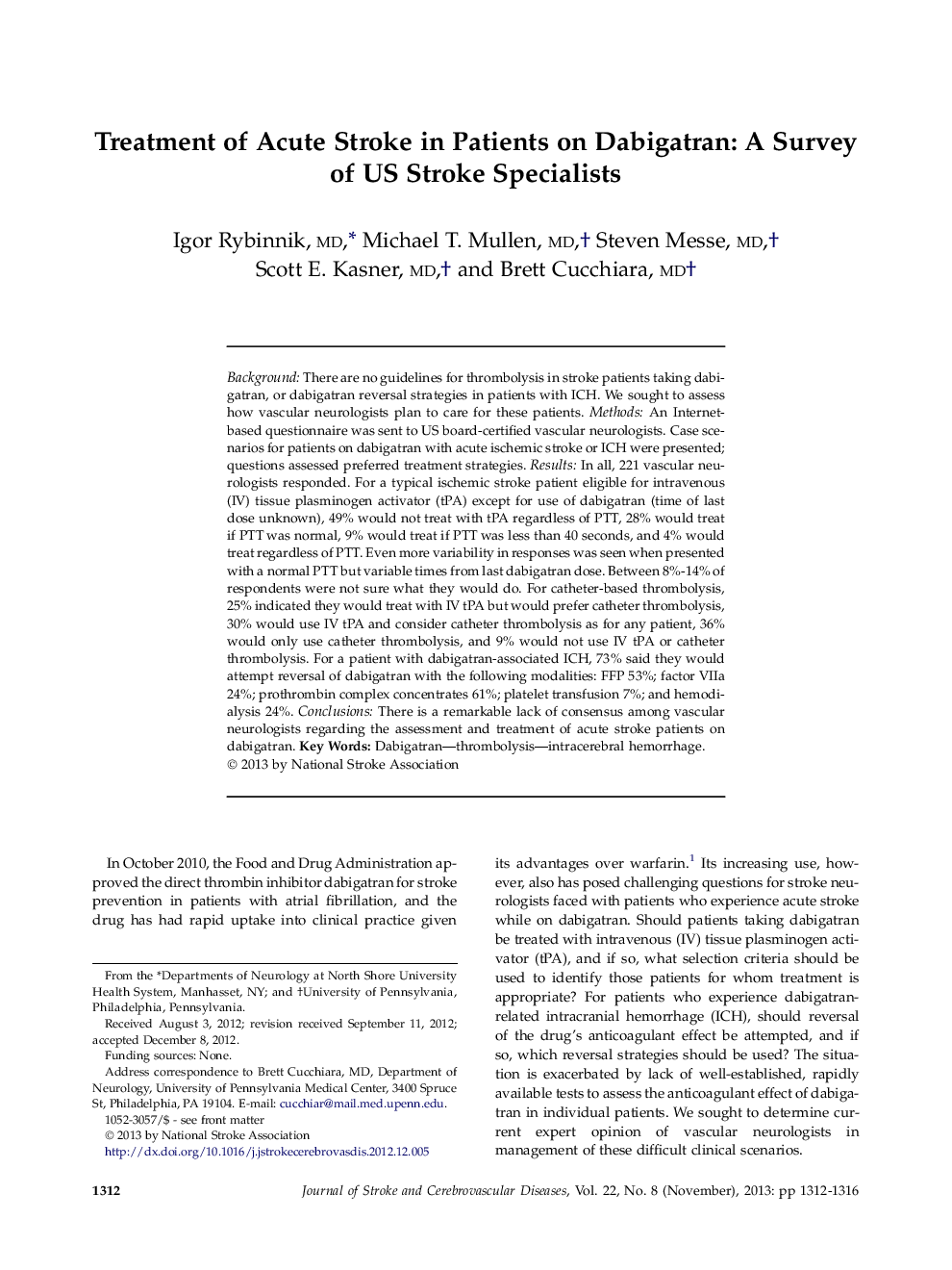| Article ID | Journal | Published Year | Pages | File Type |
|---|---|---|---|---|
| 2710627 | Journal of Stroke and Cerebrovascular Diseases | 2013 | 5 Pages |
BackgroundThere are no guidelines for thrombolysis in stroke patients taking dabigatran, or dabigatran reversal strategies in patients with ICH. We sought to assess how vascular neurologists plan to care for these patients.MethodsAn Internet-based questionnaire was sent to US board-certified vascular neurologists. Case scenarios for patients on dabigatran with acute ischemic stroke or ICH were presented; questions assessed preferred treatment strategies.ResultsIn all, 221 vascular neurologists responded. For a typical ischemic stroke patient eligible for intravenous (IV) tissue plasminogen activator (tPA) except for use of dabigatran (time of last dose unknown), 49% would not treat with tPA regardless of PTT, 28% would treat if PTT was normal, 9% would treat if PTT was less than 40 seconds, and 4% would treat regardless of PTT. Even more variability in responses was seen when presented with a normal PTT but variable times from last dabigatran dose. Between 8%-14% of respondents were not sure what they would do. For catheter-based thrombolysis, 25% indicated they would treat with IV tPA but would prefer catheter thrombolysis, 30% would use IV tPA and consider catheter thrombolysis as for any patient, 36% would only use catheter thrombolysis, and 9% would not use IV tPA or catheter thrombolysis. For a patient with dabigatran-associated ICH, 73% said they would attempt reversal of dabigatran with the following modalities: FFP 53%; factor VIIa 24%; prothrombin complex concentrates 61%; platelet transfusion 7%; and hemodialysis 24%.ConclusionsThere is a remarkable lack of consensus among vascular neurologists regarding the assessment and treatment of acute stroke patients on dabigatran.
